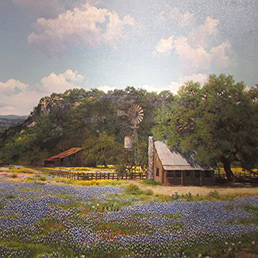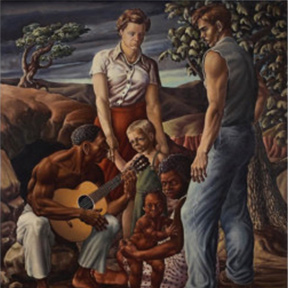- (214) 720-4044
- info@daviddike.com
- Mon - Fri: 10 am - 5 pm
Nichols, Dale Williams
Dale Williams Nichols
(AM. 1904-1995)
Artist, printmaker, illustrator, watercolorist, designer, writer and lecturer, Dale Nichols did paintings that reflected his rural background of Nebraska where he was born in David City, a small town. Although he did much sketching outdoors, most of his paintings were completed in his studio and often included “numerology, magic squares and psychic symbols.” (Zellman 912) His painting The End of the Hunt (undated) won the Hearst Award at a 1930s exhibition at the Art Institute of Chicago. In the 1960s, he traveled to Guatemala where he was much impressed by the lushness of the landscape and the Spanish and Mayan’s culture. These interests were also reflected in his artwork. As a commercial artist, Nichols was an advocate of upgrading the quality of art in illustration and advertising. In 1935, his book elaborating his theories of art, A Philosphy of Esthetics, was published, and in 1957, he completed his book Figure Drawing, published by Watson-Guptill. Nichols, succeeding Iowa artist Grant Wood, was art editor of the Encyclopedia Britannica from 1942 to 1948, and in 1930-40, served as Carnegie visiting professor to the University of Illinois. As an early champion of good art in advertising and illustration, he created artwork for direct-mail industrial advertising in the 1930s and 40s. Nichols studied at the Chicago Academy of Fine Arts, the Art Institute of Chicago with Carl Werntz, and with Joseph Binder in Vienna. During his career, he had eighteen solo exhibitions and exhibited in more than eighty regional and national exhibitions. Sources include: David Zellman, 300 Years of American Art Peter Falk, Who Was Who in American Art





